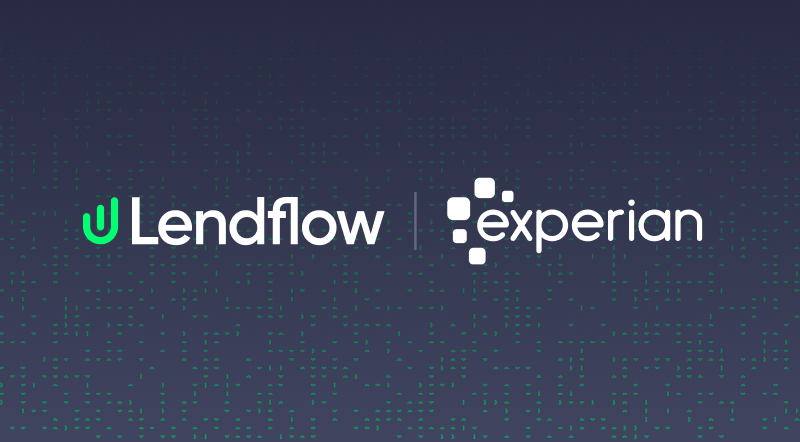[.green-span]The Definitive Guide to Data‑Powered Credit Underwriting for Brokers[.green-span]

What Is Data-Powered Credit Underwriting?
Data-powered credit underwriting shifts from traditional methods by using advanced analytics and machine learning to evaluate borrower risk more accurately. Unlike conventional underwriting, which relies on credit scores and limited financial history, data-powered systems analyze numerous data points to assess creditworthiness holistically.
This approach combines credit bureau data with alternative sources like bank transactions, utility payments, rental history, and behavioral patterns. Machine learning algorithms identify patterns that human underwriters might miss, enabling nuanced risk assessments.
The technology includes AI models that learn from loan performance data, processing applications in real-time for immediate decisions, while complex cases are flagged for review. This hybrid method ensures efficient and accurate underwriting.
For brokers, this means access to sophisticated tools that improve client-product matching and enhance communication with lenders about approval odds and improvement areas.
Traditional vs. Data-Powered Underwriting: Key Differences
The differences between traditional and data-powered underwriting illustrate why brokers are adopting technology-driven solutions. Traditional underwriting relies heavily on credit scores, debt-to-income ratios, and employment history, often overlooking qualified borrowers who don’t conform to conventional standards.
Traditional processes are slower, requiring manual document reviews and extensive back-and-forth communication, often taking 30-45 days for mortgage applications. In contrast, data-powered underwriting builds a comprehensive borrower profile using alternative data, allowing fair assessments for those with thin credit files or non-traditional incomes. Decisions can be made in minutes.
Risk assessment accuracy differs significantly; traditional methods rely on historical correlations, while data-powered systems continuously update models based on real-time data, resulting in lower default rates and better pricing for various risk segments.
Documentation requirements also vary greatly, with traditional methods needing extensive paperwork, while data-powered systems can automatically verify information through digital sources.
Benefits of Data-Powered Underwriting for Brokers
Data-powered underwriting offers brokers significant advantages that impact success and client satisfaction. The most immediate benefit is improved processing speed, with decisions often made within minutes rather than days or weeks, allowing brokers to efficiently serve more clients.
Enhanced accuracy reduces declines for qualified borrowers, leading to higher approval rates and stronger relationships with lenders and borrowers. Brokers can reach underserved markets by identifying good risks traditional methods may miss.
Cost reduction is another advantage, as automated data collection minimizes the need for manual processing and follow-ups, lowering operational costs and increasing application handling capacity.
Comprehensive data analysis gives brokers insights into application outcomes, improving pre-qualification conversations and helping clients find suitable products. This transparency allows brokers to set appropriate expectations.
Client experience improves with reduced documentation, faster decisions, and accurate assessments, resulting in higher satisfaction and increased referrals.
Core Components of Data-Powered Underwriting Systems
Modern data-powered underwriting systems consist of interconnected components that assess credit risk comprehensively. The data ingestion layer collects information from credit bureaus, bank accounts, employment databases, and alternative sources, ensuring decisions are based on current and comprehensive data.
Machine learning algorithms analyze vast data sets to identify patterns predicting repayment behavior, continuously evolving with new loan performance data. Different models may be used for various loan products, each optimized for specific risk factors.
The decision engine translates insights into actionable underwriting decisions, applying business rules and risk parameters to determine loan terms and approvals. Advanced engines can handle complex scenarios and provide rationale for recommendations.
Integration capabilities ensure these systems work with existing loan origination systems and CRM platforms, enabling real-time data sharing and reducing manual errors.
Risk monitoring and governance components track performance, identify bias, and ensure regulatory compliance, validating that decisions remain fair and accurate.
Essential Data Sources and Types
Data-powered underwriting relies on diverse sources to create comprehensive borrower profiles. Traditional credit data, including credit reports and payment history, is essential but enhanced by alternative sources that provide deeper insights.
Banking data offers real-time insights into cash flow, spending, and financial stability, revealing important patterns that traditional reports might miss, especially for self-employed or irregular income borrowers.
Employment and income verification through employer connections and automated methods reduce fraud risk and streamline the application process.
Utility and telecom payment data provides insights into payment behavior, beneficial for borrowers with limited credit history. Consistent payments can indicate financial responsibility.
Property and asset data, including real estate and vehicle registrations, verifies borrower assets, aiding in loan-to-value calculations.
Behavioral data, such as application patterns and device information, helps identify potential fraud and assess engagement, although it must be used carefully to avoid bias.
How Machine Learning Enhances Credit Decisions
Machine learning transforms raw data into underwriting insights, identifying complex patterns that traditional methods may overlook. Supervised learning models predict repayment behavior based on historical loan performance, refining predictions with new data.
Ensemble methods combine multiple models to improve accuracy and mitigate individual model limitations, leading to more robust risk assessments.
Natural language processing analyzes unstructured data like loan narratives and financial statements, extracting insights that would require manual review.
Anomaly detection algorithms flag unusual patterns indicating potential fraud, protecting lenders and brokers from losses.
Real-time model updating ensures that underwriting reflects current market conditions, adapting continuously to changes in borrower behavior.
Regulatory Compliance and Fair Lending Considerations
Data-powered underwriting systems must comply with complex regulations while ensuring fair lending practices. The ECOA and FCRA mandate non-discriminatory underwriting processes.
Model governance frameworks ensure compliance through regular bias testing and performance monitoring, identifying and correcting disparate impacts on protected classes while maintaining detailed documentation.
Explainability features provide clear reasons for credit decisions, especially for declined applications, enabling brokers to give meaningful feedback.
Data privacy regulations govern borrower information collection and usage, requiring compliance programs to manage data retention, consent, and third-party sharing.
Regular audits verify ongoing compliance, examining both algorithm performance and business outcomes to ensure fair lending objectives are consistently met.
Consumer protection extends to ethical data use and transparent communication about underwriting processes, involving clear disclosures and provisions for correcting inaccurate information.
Implementation Strategies for Brokers
Implementing data-powered underwriting requires strategic planning. Brokers should assess their current technology infrastructure and integration needs, deciding whether to build custom solutions or partner with providers.
Vendor selection should prioritize regulatory compliance, integration capabilities, and support quality, including reference checks and technical evaluations.
Staff training is crucial for successful implementation, ensuring team members understand system functionality and can interpret outputs effectively.
Pilot programs can test new systems with limited risk, focusing on specific products or markets to validate performance and identify optimization opportunities.
Performance measurement frameworks should track key metrics like approval rates, processing times, and client satisfaction, demonstrating the value of data-powered underwriting.
Integration planning must address data flow, system compatibility, and workflow adjustments required to leverage new capabilities fully.
Choosing the Right Technology Partners
Selecting technology partners is vital for successful data-powered underwriting. Brokers should assess partners based on technology capabilities, regulatory compliance, industry experience, and long-term viability.
Technology assessments should focus on system architecture, scalability, and integration capabilities, ensuring robust APIs and real-time processing without performance degradation.
Regulatory compliance expertise is crucial, as partners must understand fair lending and data privacy regulations, providing documentation of their compliance frameworks.
Industry experience and client references offer insights into partner reliability, with discussions covering implementation experiences and ongoing support quality.
Service level agreements should define performance expectations and include provisions for updates, security patches, and compliance monitoring.
Cost structure evaluations must consider initial implementation and ongoing operational costs, including licensing, integration, training, and support. Brokers should also assess potential ROI through improved efficiency and higher approval rates.
Measuring Success and ROI
Establishing clear metrics for success helps brokers optimize systems and demonstrate value. Key performance indicators should include operational efficiency, risk management, and client satisfaction.
Operational efficiency metrics like processing time and approval rates should be tracked before and after implementation to quantify improvements.
Risk management metrics should focus on default rates and portfolio performance, with data-powered underwriting demonstrating better assessments through lower default rates.
Client satisfaction measurements, including Net Promoter Scores and application abandonment rates, indicate improved experiences and increased referrals.
Revenue impact analyses should consider increased capacity, approval rates, and reduced operational costs, with many brokers finding they can serve more clients without proportional staffing increases.
Competitive advantage metrics may include market share growth and retention levels, as superior underwriting capabilities often attract clients from competitors.
ROI calculations should account for both quantitative benefits and qualitative improvements, recognizing that while cost savings are measurable, enhanced relationships and market positioning offer long-term value.
Future Trends and Emerging Technologies
The evolution of data-powered underwriting is accelerating, with emerging technologies promising greater capabilities. Advances in AI, including large language models, are enhancing data analysis and risk prediction sophistication.
Open banking initiatives and expanded data sharing agreements are increasing access to real-time financial data, enabling accurate borrower assessments.
Blockchain technology may improve data verification and fraud prevention, enhancing security and reliability while reducing verification costs.
Real-time credit monitoring and dynamic pricing models could provide personalized lending, adjusting terms based on borrower behavior and risk profiles.
Expanding alternative data sources, like social media analysis and behavioral biometrics, must be balanced with privacy concerns and fair lending requirements.
RegTech solutions are advancing, offering automated compliance monitoring and reporting, helping brokers maintain compliance while reducing administrative burdens.
Conclusion
Data-powered credit underwriting signifies a transformative shift in how brokers assess credit risk. By leveraging analytics, machine learning, and diverse data sources, these systems enhance speed, accuracy, and client satisfaction.
Successful implementation requires careful planning, suitable technology partnerships, and ongoing performance monitoring. The benefits extend beyond efficiency, impacting risk management and client experiences while providing competitive advantages.
To succeed, brokers must understand technology, choose appropriate partners, and implement systems with attention to compliance and fair lending. With proper execution, data-powered underwriting can significantly enhance broker operations and provide substantial value to all stakeholders in the lending process.













.png)

